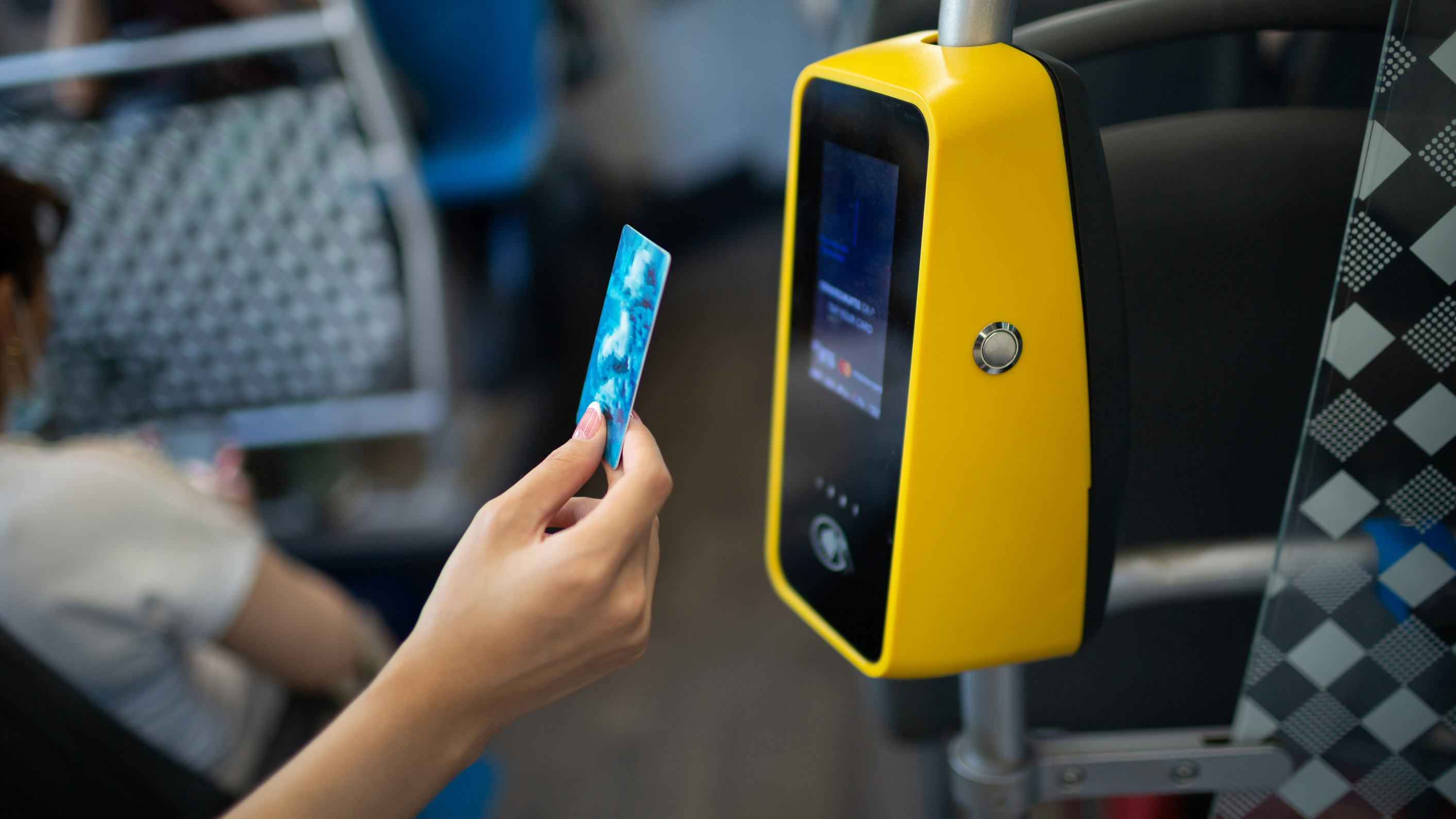Why contactless payments are at the heart of reinventing America’s public transport
by Andreea

The Californian government has set ambitious goals for improving sustainability, mobility and equity across the state. At the core of achieving these goals is transforming under-utilised public transport. They’re achieving this is by empowering operators to move from cash reliance to contactless open loop payments.
At first glance, a different payment and ticketing system might not seem like enough to drive such deep changes. But by demystifying fare structure, making transit more efficient and opening up networks to travellers of all incomes, contactless EMV ticketing has the power to completely transform how Californians get around.
It’s time to start leaving the car at home
Cars have dominated US streets for more than a century. The country was an early adopter of fast assembly line production, bringing cheaper cars to every other household by 1930. While Europe spent the following decades altering their cities to promote walking, cycling and public transport. American urban planning designed streets for a driving population.
Those cultural differences are still shaping the way Americans get around today. Across the country cars account for the lion’s share of commutes. In California specifically the figure is more than 80%, with solo drivers making up almost three quarters of those journeys.
Meanwhile the majority of public transport users are those who have no other choice – for example, young, elderly and disabled people, or low income workers who can’t afford a personal vehicle.
That disparity doesn’t just lead to more urban congestion and worse air quality. It also has a negative impact on the transit services themselves. Bus agencies in particular are typically small organisations that depend on government funds to support subsidised fares. Therefore, low numbers of public transport users makes improving matters seem like less of a priority.
It’s a picture that California’s Department of Transportation is trying to change. In 2019 the department launched the California Integrated travel Project (Cal-ITP) to not only modernise the transit network but also encourage more drivers to choose public transport over their cars. And an essential part of achieving those goals is payment.
The convenience of contactless can change transport habits
Contactless open loop ticketing uses EMV technology to both pay for and validate travel. EMV is the same tech that allows consumers to pay for goods by tapping the chip in their bank card or a contactless-enabled phone or smart watch. In a public transit setting, EMV allows that card or device to function as a passenger’s ticket. They can pay for and board transport with a single tap.
The benefits of a contactless system are wide-ranging, from simplifying fares and speeding up boarding to making transit interoperable and more attractive to those who would usually avoid it. Fare caps configured in a back office system ensure that the best value fares – including discounts and concessions – can be calculated and applied automatically. This makes travel more affordable to low income passengers who rarely have the money for upfront season passes.
As more passengers take advantage of this fast and frictionless contactless open loop ticketing, transport operators will be able to take greater strides towards becoming financially sustainable. Increased ridership and fare recovery can now be invested in improving services. In turn, this makes them more attractive and creates a cycle of growth.
Collaboration leads to powerful change
Revolutionising California’s public transit payments is no easy feat. There are more than 300 individual transit providers across the state. However, there is no standardisation in terms of how they currently collect fares. Most of those agencies are comparatively small operations serving single towns or districts. They rarely have the resources to procure a bespoke solution themselves.
To find a response that benefits all, Cal-ITP has been working with providers like Littlepay to devise simple and affordable contactless systems. They’ve set up Mobility Marketplace, an online index of approved vendors. This makes it straightforward for even the smallest operators with no experience of procurement to find the technical partners they need.
Equity has also been a core focus of the project. Cal-ITP is working with payment networks, such as Square/Block to create bank-like accounts for the nearly 25% of Californians who are currently unbanked. This ensures that the transition from cash to contactless doesn’t leave them behind. According to Gillian Gillett, Head of the Cal-ITP Project, they’re seeing uptake. Currently, with 30% of Square Cash accounts issued between May and August 2021, the very first transaction was made on a Monterey-Salinas trip.
In 2021 Cal-ITP began rolling out contactless open loop payments across California, starting with trials in Monterey, Sacramento and Santa Barbara. Every demonstration has gathered valuable insights on implementation, operator and rider education, as well as possible positive changes to fare structure.
Those insights will lay the groundwork for future phases of deployment, and help vendors like Littlepay to continue building the tools to make a healthier, simpler and more efficient transit system for all.
Not based in California?
The work Cal-ITP is transforming the transit technology industry. It has the power to benefit not just the 300+ transit providers in California, their vision was designed for American transit providers everywhere. They provide resources and technical assistance to public transportation providers nationwide. So whether you’re a public transit provider in California or elsewhere in the U.S, the Littlepay team can help you navigate Cal-ITP’s resources or the process of switching to contactless transit payments.
Trending Topics

Project Highlights: Washington DC’s record breaking upgrade to accept open loop payments

Nevada County Connects leverages Cal-ITP’s Mobility Marketplace to elevate the payment experience across its bus network

 Insight
Insight
 Knowledge
Knowledge
 News
News



